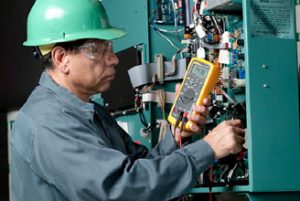REPAIRING THE COMPRESSOR RELEASE LINE TEMPERATURE LEVELS
Stress and also temperature level are basic examinations that you could execute to identify just what is occurring inside the compressor. To find out the appropriate techniques to examine the cooling agent superheat as well as subcooling at the compressor, describe the Fluke application note labelled, “Repairing HVAC/R systems utilizing cooling agent superheat as well as subcooling.”.
To gauge the temperature level of the compressor, take the complying with actions:

Make use of a water pipes clamp device with a DMM to gauge the discharge refrigerant line temperature level at the discharge of the compressor. Heats over 275-300Â ° F( 135-148Â ° C) will gradually ruin lube high qualities and also the efficiency of the compressor. These heat problems could be triggered by high condensing temperatures/pressures, inadequate cooling agent fee, non-condensible’s within the system, high superheat from the evaporator, limited suction line filters, or reduced suction stress. These problems trigger the compressor to have an above typical compression proportion, job harder, create hotter inner hermetic electric motor windings, and also because of this, create compressor wear, tiredness, and also failing.
A temperature level study is an essential component of the solution professional’s task. A fast check of a system’s elements not just aids to detect problems however likewise permits you to prepare for failings by routine tracking of essential temperature levels. Make use of an infrared thermostat to do a fast study of:
- Compressor head temperature levels.
- Compressor oil sump temperature levels.
- Evaporator coil as well as suction line temperature levels.
- Release line refrigerant temperature levels.
- Condenser coil and also fluid line temperature levels.
- Follower electric motor temperature levels.
With an infrared thermostat, you could promptly check a refrigeration system by checking the temperature levels of different parts (see Number 1). While touching each of the elements frequently does this, a non-contact infrared device is quicker. By maintaining cautious documents, it is feasible to discover readings that show approaching failure. This permits you to maintain the system in leading problem and also prevent expensive failings.
